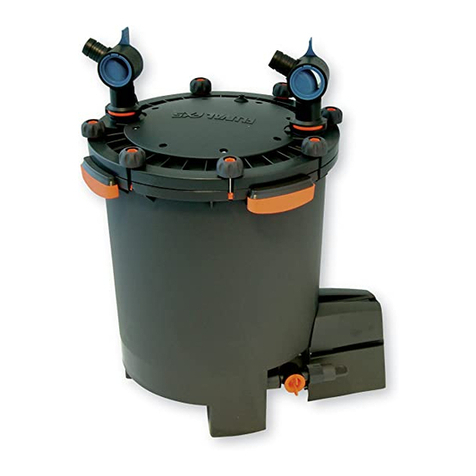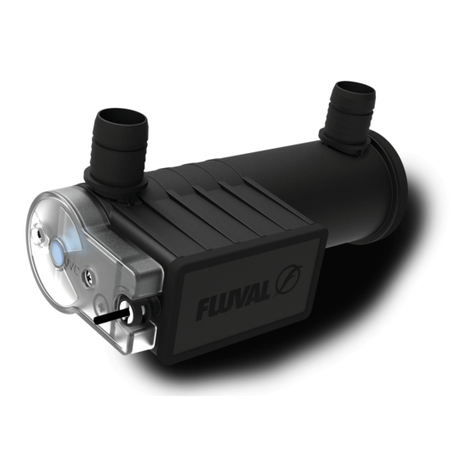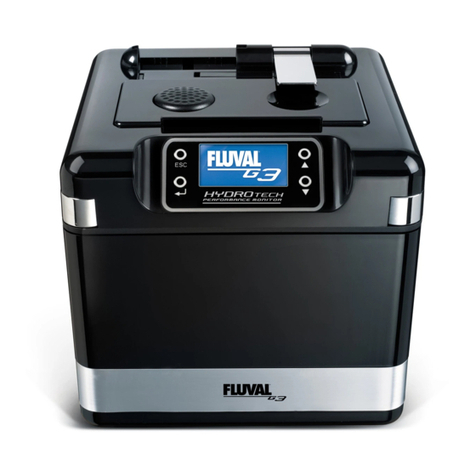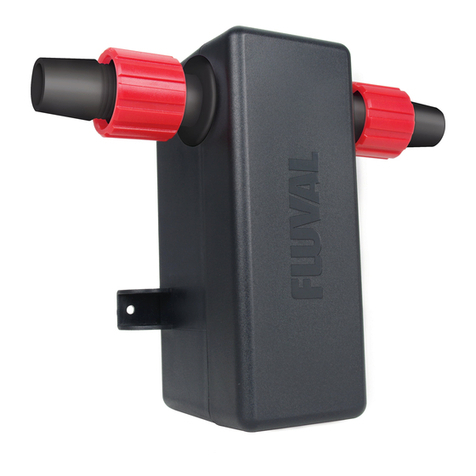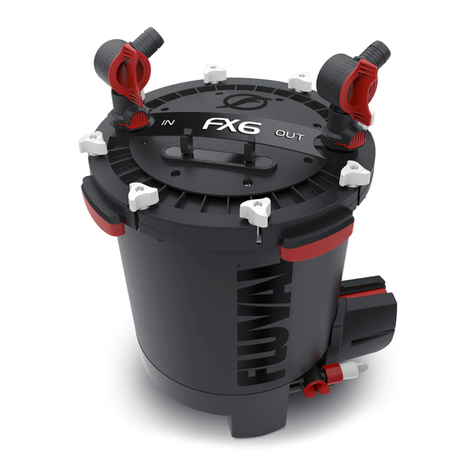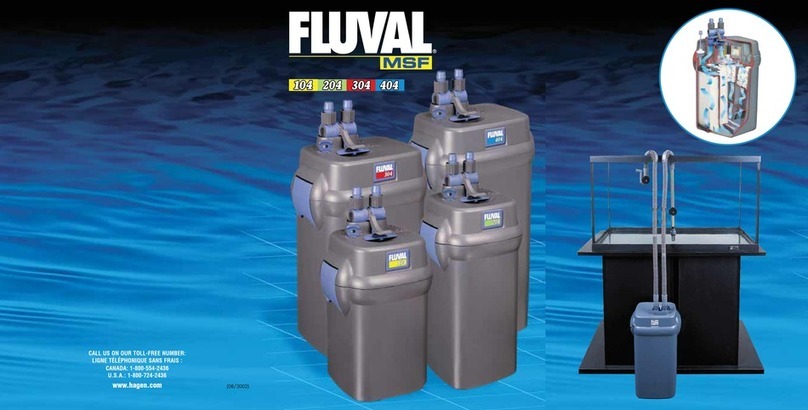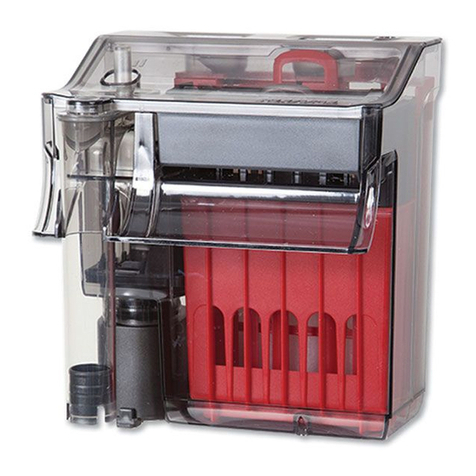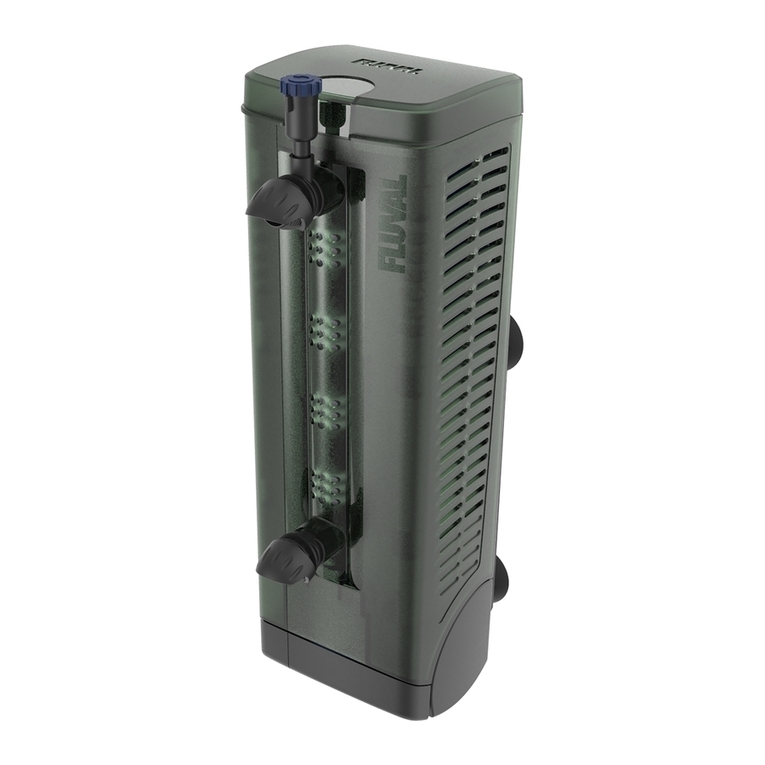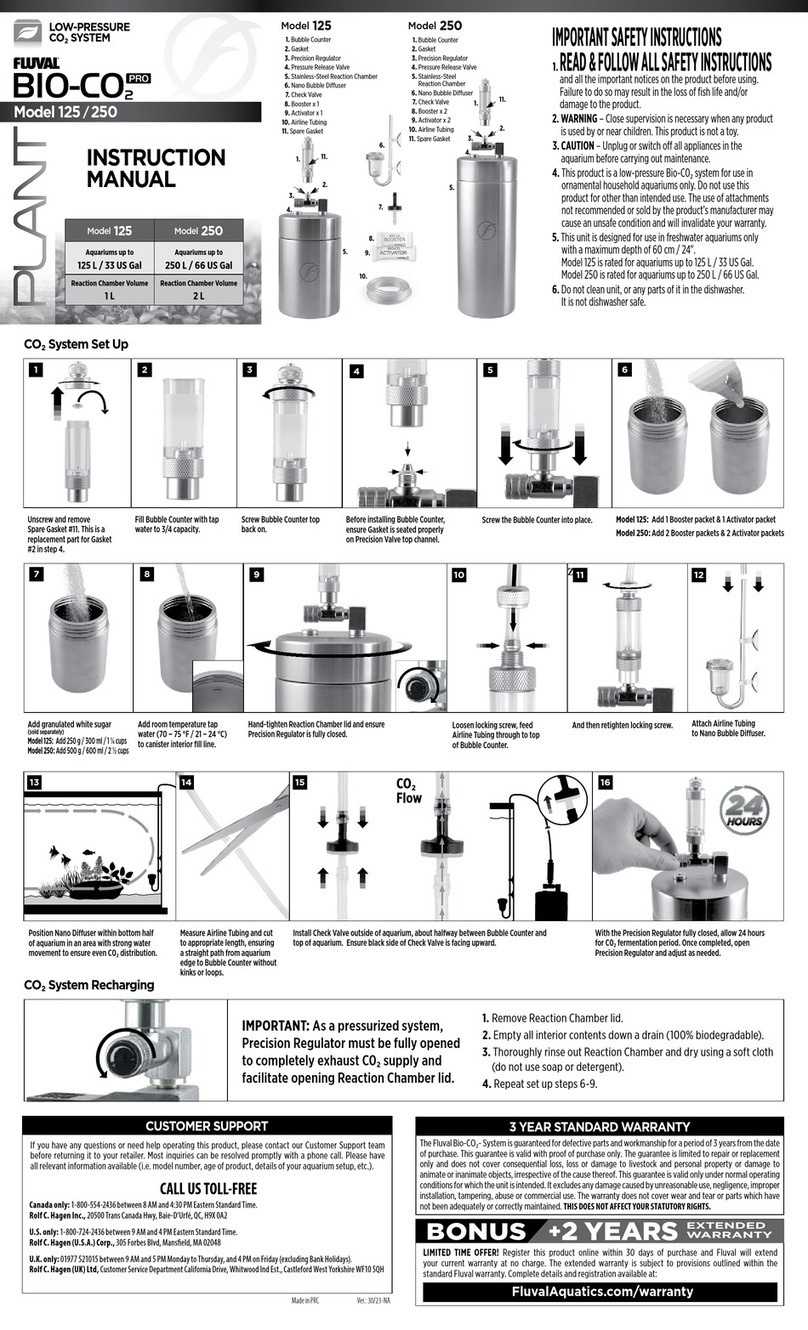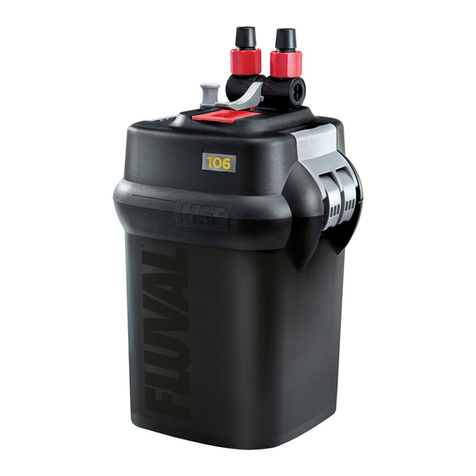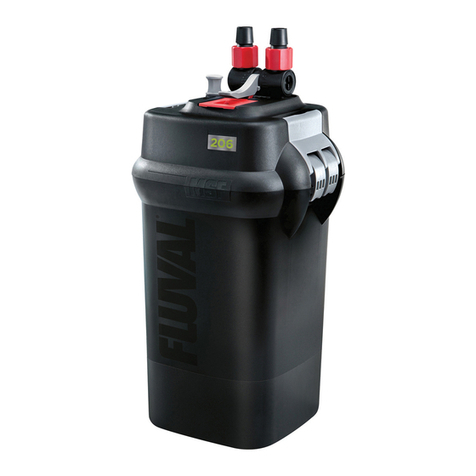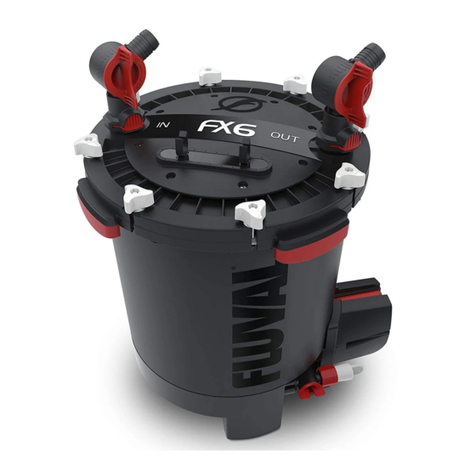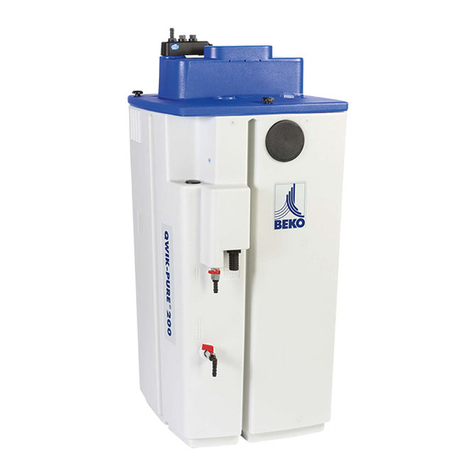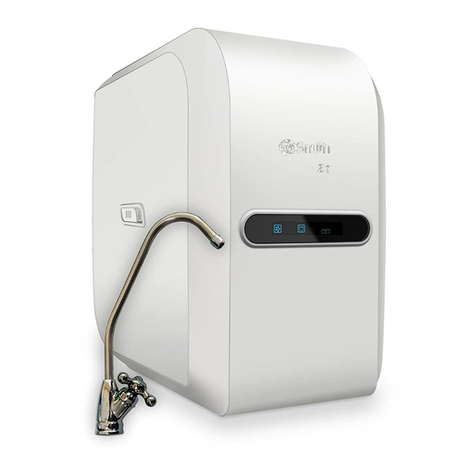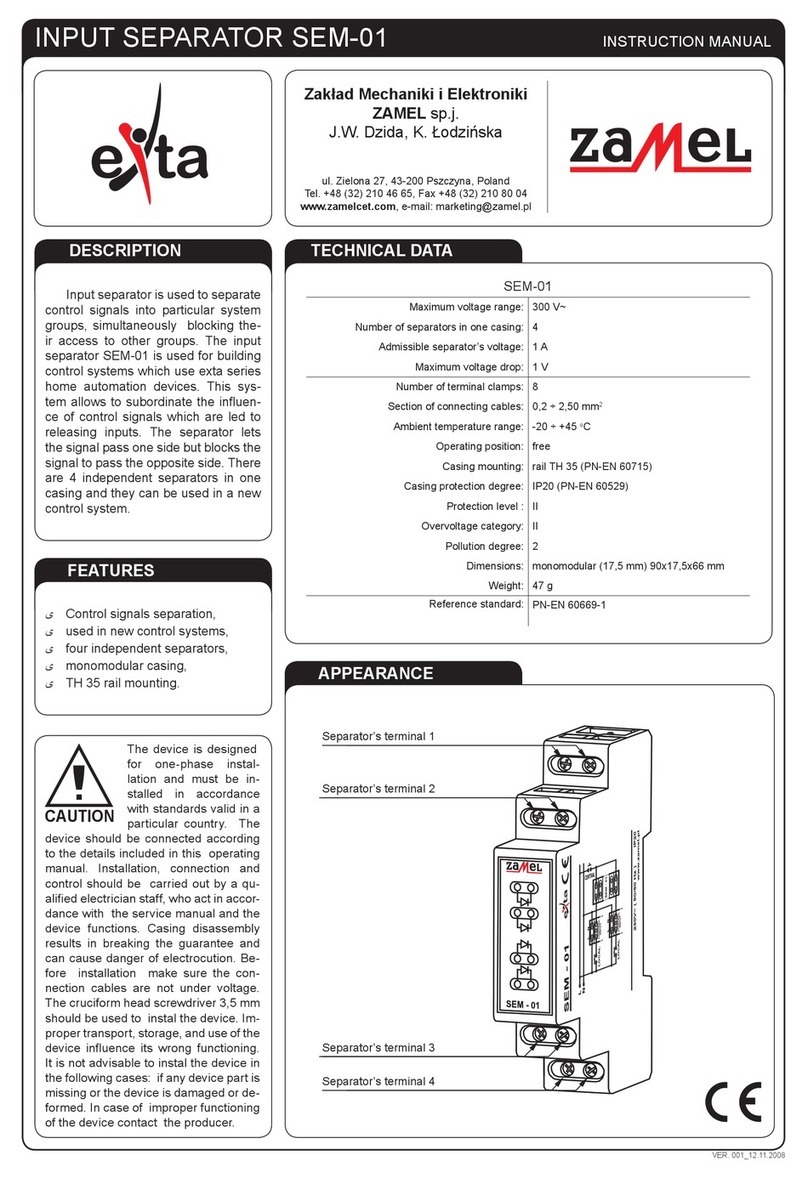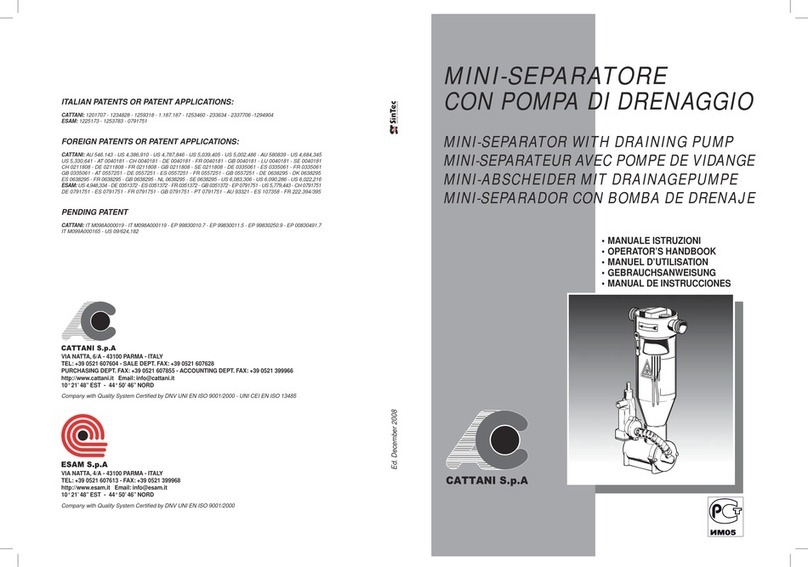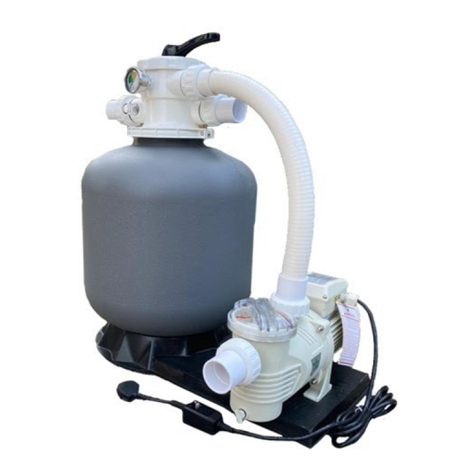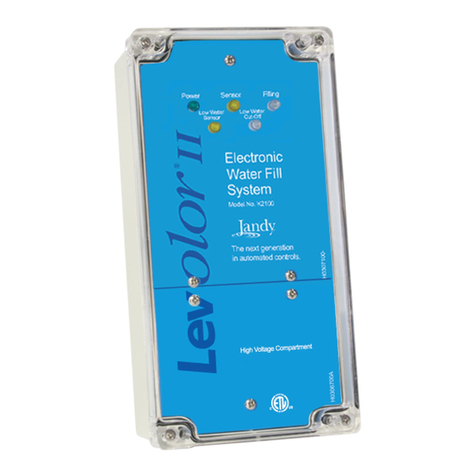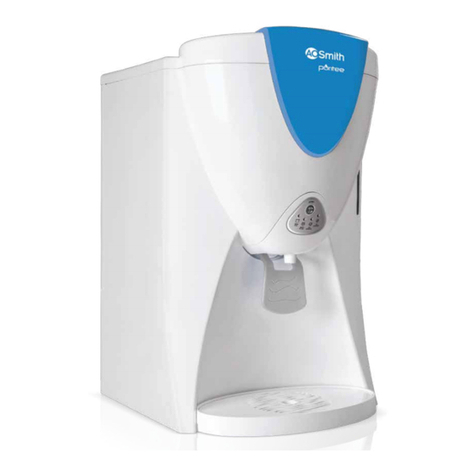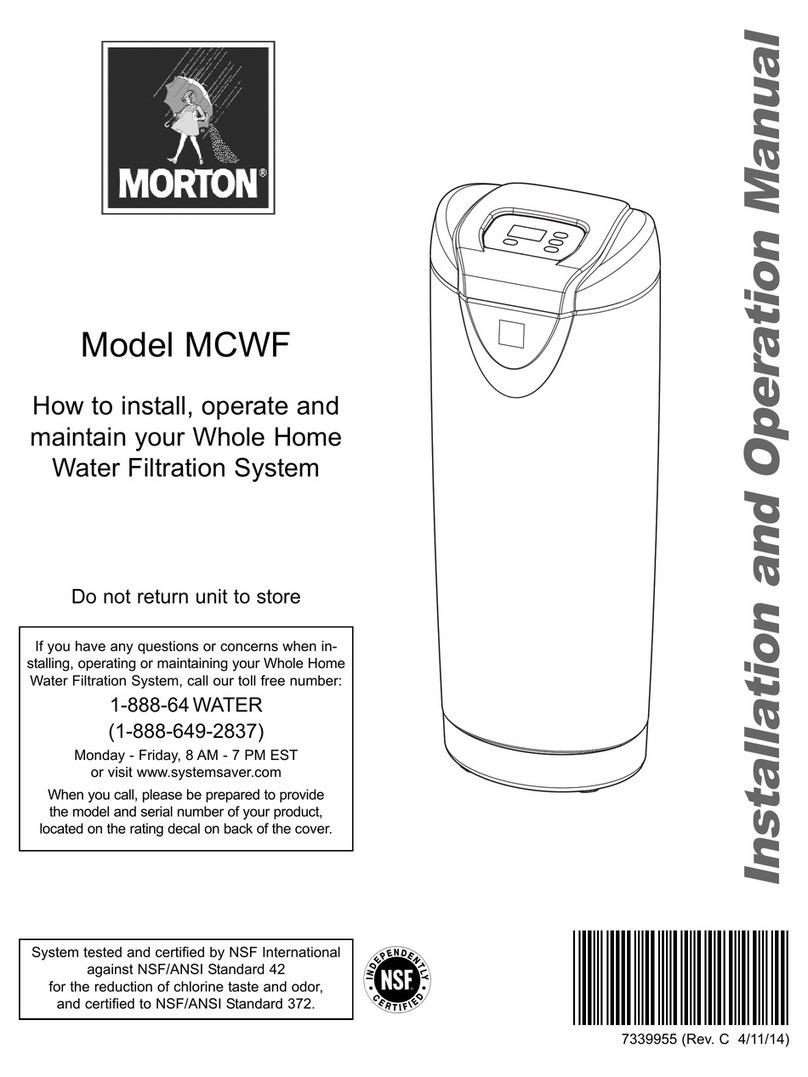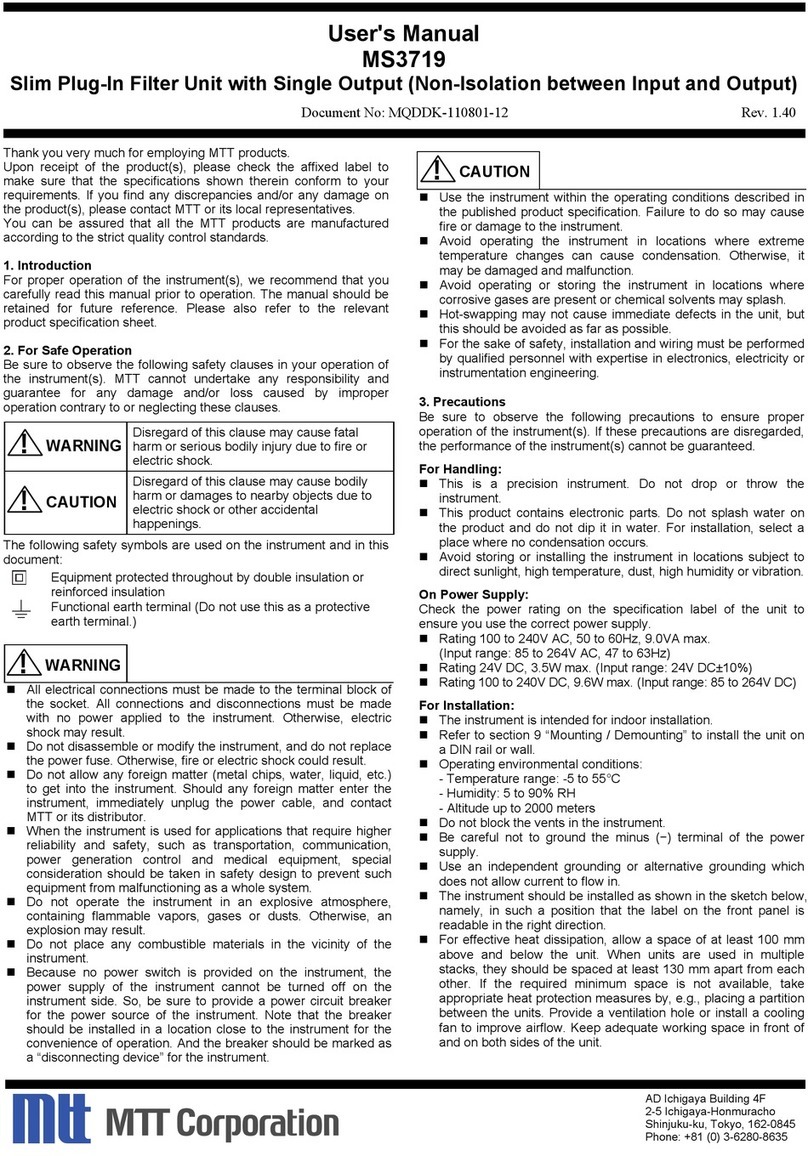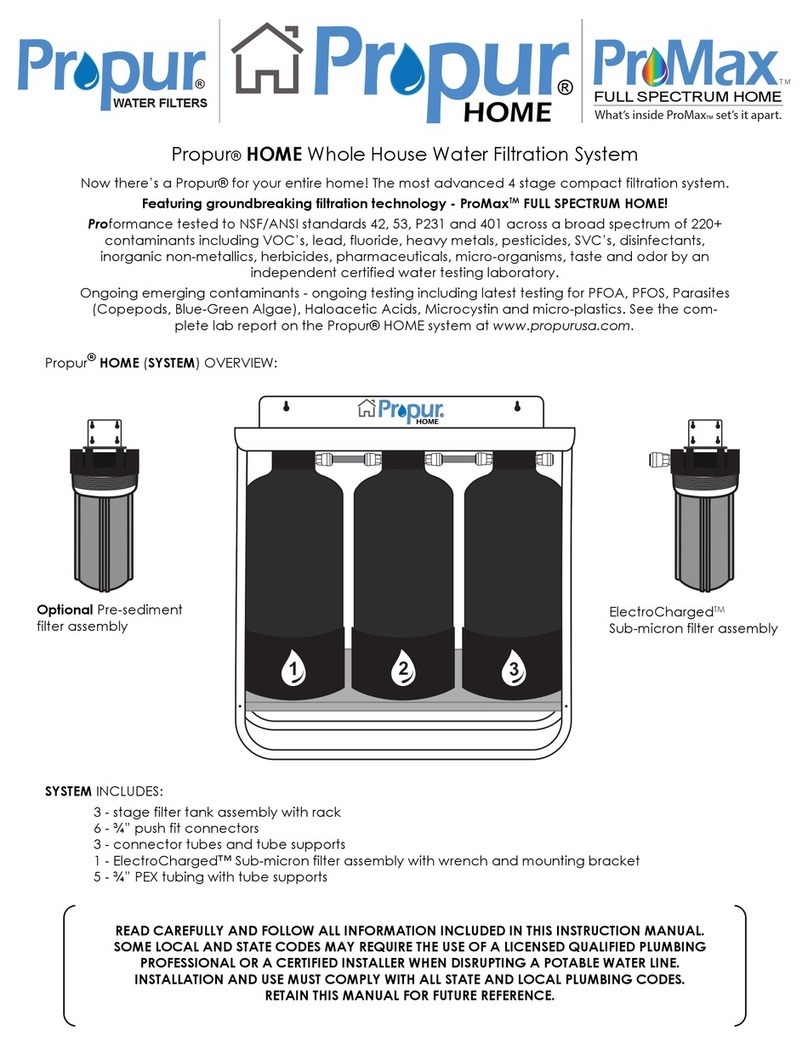Fluval 207 User manual

USER MANUAL
MODE D’EMPLOI
BENUTZERHANDBUCH
MANUAL DEL USUARIO
GEBRUIKERSHANDLEIDING
MANUAL DO UTILIZADOR
07
SERIES

12
3
3
45
6
9
8
7
10
11
12
45
6
8
9
7
10
11
12
12
207107
14
13
HOSING SETUP FOR
VICENZA, VENEZIA
& ROMA AQUARIUMS
Please refer to
Easy Connect System
Installation in the
Fluval Roma, Vicenza
or Venezia Aquarium
Instruction Manual

12
12
12
3
45
3
6
8
9
7
10
11
11
12
45
6
8
9
7
10
12
12
12
3
45
3
6
8
9
7
10
11
11
12
45
6
8
9
7
10
407307
14
13
HOSING SETUP FOR
VICENZA, VENEZIA
& ROMA AQUARIUMS
Please refer to
Easy Connect System
Installation in the
Fluval Roma, Vicenza
or Venezia Aquarium
Instruction Manual
14
13
HOSING SETUP FOR
VICENZA, VENEZIA
& ROMA AQUARIUMS
Please refer to
Easy Connect System
Installation in the
Fluval Roma, Vicenza
or Venezia Aquarium
Instruction Manual

EN-1
FLUVAL CANISTER FILTER
Refer to diagram on inside front cover.
1 Hosing
7
Canister cover (Motor Head)
2Rim connector assemblies (2)
8
Instant-prime handle (attached)
3
Suction cups (4)
9
Lift-lock clamps (attached)
4
Intake assembly with suction cup
10
Impeller cover
5
Output nozzle assembly
11
Filter canister (media baskets inside)
6
AquaStop valve
12
Motor head gasket
VICENZA, VENEZIA & ROMA AQUARIUMS ONLY
13
Metal Clamps (2)
14
Ribbed Hosing (2)
MEDIA CONFIGURATION
Your Fluval 07 Series filter comes pre-loaded with media. When replacing the media, it is recommended to follow the same order to help ensure opti-
mal efficiency and best results
.
PRODUCT PARTS

IMPORTANT SAFETY INSTRUCTIONS
WARNING - To guard against injury, basic safety precautions should be observed including the following:
1.
READ & FOLLOW ALL
SAFETY INSTRUCTIONS
and all the important notices on the appliance before using. Failure
to do so may result in the loss of fish life and/or damage to the
appliance.
2.
DANGER – To avoid possible electric shock, special care should be
taken since water is employed in the use of aquarium equipment.
For each of the following situations, do not attempt repairs
yourself, return the appliance to an authorized service facility for
service or discard the appliance.
A. If the appliance falls into the water, DON’T reach for it! First
unplug it and then retrieve it. If electrical components of the
appliance get wet, unplug the appliance immediately.
B. If the appliance shows any sign of abnormal water leakage or if
RCD (or GFCI – Ground Fault Current Interrupter) switches off,
disconnect the power supply cord from the mains.
C. Carefully examine the appliance after installation. It should not
be plugged in if there is water on parts not intended to be wet.
D. Do not operate any appliance if it has a damaged cord or plug,
or if it is malfunctioning or it is dropped or damaged in any
manner. The power cord of this appliance cannot be replaced. If
the cord is damaged, the appliance should be discarded. Never
cut the cord.
E. To avoid the possibility of the appliance plug or receptacle
getting wet, position the appliance to one side of a wall mounted
receptacle. To prevent water from dripping onto the receptacle
or plug, a “drip loop” (see picture) should be arranged by the
user in the cord connecting appliance to a receptacle. The “drip
loop” is that part of the cord below the level of the receptacle
or the connector, to prevent
water travelling along the cord
and coming in contact with
the receptacle. If the plug or
receptacle does get wet, DON’T
unplug the cord. Disconnect
the fuse or circuit breaker that
supplies power to the appliance. Then unplug and examine for
presence of water in receptacle.
3. WARNING – Close supervision is necessary
when any appliance is used by or near children.
This appliance can be used by children ages 8
years and above and persons with reduced
physical, sensory or mental capabilities or
lack of experience and knowledge if they
have been given supervision or instruction
concerning use of the appliance in a safe way
and understand the hazards involved. Children
shall not play with the appliance. Cleaning
and user maintenance shall not be made by
children without supervision.
4.
To avoid injury, do not touch moving parts or hot parts.
5.
CAUTION – Always unplug or disconnect all appliances in the
aquarium from electricity supply before placing hands in water,
before putting on or taking off parts and while the equipment is
being installed, maintained or handled. Grasp the plug and pull
to disconnect. Never yank cord to pull plug from outlet. Always
unplug an appliance from an outlet when not in use.
6.
This is an AQUARIUM FILTER-PUMP INTENDED FOR DOMESTIC and
INDOOR use only. It is intended for use in ornamental household
aquariums. It may be used with fresh or salt water. Maximum
water temperature 35°C. Do not use this appliance for other than
intended use (ie: DO NOT use in swimming pools, bathrooms etc.).
The use of attachments not recommended or sold by the appliance
manufacturer may cause an unsafe condition and will invalidate
your warranty.
7.
This appliance is not a submersible aquarium filter pump. Do not
install or store this appliance where it will be exposed to the weather
or temperatures below freezing.
8.
Make sure that this appliance is securely installed before operating it
and that the electrical connection is in accordance with the data on
the rating label. Do not allow filter pump to run dry.
9.
If an extension cord is necessary, a cord with proper rating should
be used. A cord rated for less amperes or watts than the appliance
rating may overheat. Care should be taken to arrange the cord so
that it will not be tripped over or pulled. The connection should be
carried out by a qualified electrical installer.
10.
SAVETHESEINSTRUCTIONS
for future reference.
EN-2

EN-3
IMPORTANT
To ensure optimal and proper functioning of your 07 Series Fluval External Filter, regular maintenance is required. Failure to do so
may result in the failure of the filter and will invalidate your warranty. Additionally, regular cleaning and maintenance will greatly
reduce or completely prevent faults and reduction in performance. Please refer to the maintenance schedule below.
RECOMMENDED MAINTENANCE FREQUENCY
COMPONENTS MONTHLY EVERY 3 MONTHS EVERY 6 MONTHS YEARLY
Magnetic Impeller & Impeller Well 1,4,6 Check & Clean Replace (Impeller only)
Ceramic Shaft 4Check & Clean Replace
Intake Stem/Strainer 3Check & Clean
Ribbed Hosing Check & Clean
Primer Assembly with Primer Cover Clean & Lubricate
Motor Head Gasket 2, 5 Clean & Lubricate Replace
AquaStop O-ring Gaskets Clean & Lubricate
Quick Clear Replace
Bio-Foam Check & Clean Replace
Bio-Foam+ Check & Clean Replace
Bio-Foam Max Check & Clean Replace
BIOMAX Rinse with aquarium water Replace Half Quantity
Pre-Filter Replace Half Quantity
BIOTERRA Rinse with aquarium water Replace Half Quantity
Carbon Replace
Ammonia Remover Replace
Zeo-Carb Replace
Phosphate Remover (Pad) Replace
Nitrite Remover (Pad) Replace
Ammonia Remover (Pad) Replace
To ensure constant presence of beneficial bacteria, never replace all media at the same time.
MODEL 107 207 307 407
AQUARIUM* 10-30 US Gal
40-130 L 20-45 US Gal
60-220 L 40-70 US Gal
90-330 L 50-100 US Gal
150-500 L
PUMP PERFORMANCE 145 US Gal/h
550 L/h 206 US Gal/h
780 L/h 303 US Gal/h
1150 L/h 383 US Gal/h
1450 L/h
VERTICAL PRE-FILTER 514 cm803 cm803 cm1074 cm
BASKET VOLUME 1.2 L 1.8 L 3.1 L 4.2 L
TOTAL CHAMBER VOLUME 2.0 L 3.1 L 4.5 L 6.0 L
CANISTER VOLUME 3.9 L 5.3 L 7.3 L 9.2 L
FILTER DIMENSIONS 7.5” x 7” x 13.7”
19 x 18 x 35 cm 7.5” x 7” x 16.5”
19 x 18 x 42 cm 9.5” x 7” x 16.5”
24 x 18 x 42 cm 9.5” x 7” x 19.3”
24 x 18 x 49 cm
FILTER CIRCULATION** 95 US Gal/h
360 L/h 121 US Gal/h
460 L/h 206 US Gal/h
780 L/h 245 US Gal/h
930 L/h
MAX WATER COLUMN HEIGHT 1.45 m 1.45 m 1.75 m 2.25 m
WATTAGE – 120V/60Hz:
WATTAGE – 230-240V/50Hz: 10 W 10 W 16 W
15 W 23 W
20 W
*Aquarium recommendations are based on North American (US Gal) or European (L) standard aquarium usage
**Flow rates were measured with intake and output hoses of the same length
1. Ensure Impeller Cover is fitted right way up when replacing.
2. Lubricate Motor Head (“O” Ring) gasket using an inert lubricant
(i.e. Fluval Silicone Lubricant #A325 or vegetable oil). Do NOT use
petroleum jelly based products.
3. Pipes will gradually block with protein slime and waste.
4. Yearly replacement ensures optimal performance.
5. The Motor Head Gasket (“O” Ring) will deteriorate over time and
must be replaced yearly to avoid the potential for leaks.
6. Impeller will wear out over time. As a preventative step, replace
yearly.

IMPORTANT: Read all instructions before beginning.
• Ensure water level remains below output nozzle during setup.
• Allow 30-45 minutes for setup and installation.
• Tools required: Utility knife. (Note: For an unusually shallow aquarium, the intake tube may need to be
cut; this requires a hacksaw.)
DO NOT PLUG IN FILTER UNTIL SETUP IS COMPLETE AND UNIT IS FILLED WITH WATER.
1. Unpack and identify all parts
Use the diagram on the inside front cover as a guide. A parts
guide can also be found at the end of this manual.
2. Prepare the aquarium
1. Decide on filter placement. Remember, this is a gravity-
fed system. For it to work properly, all the Installation
Requirements below must be adhered to.
Installation Requirements
• The canister base must never be more than 4.5 ft. (1.4
m) below the water level.
• Hosing must follow a straight path from the filter to
the aquarium rim, with no loops and very little slack.
• The water level should never be more than 7 in. (17.5
cm) below your aquarium rim.
• The filter must ALWAYS be positioned below the
aquarium.
• Intake tube should not be positioned in close proximity to
an air source.
2. Place the two rim connector assemblies over the back top edge
of the aquarium.
Place one just above the spot where you want to position the
intake tube; place the other just above the spot where you want
to position the output nozzle. Be sure the longer section of
each connector is on the outside of the aquarium.Attach suction cups to the outside and inside
section of each connector.
IMPORTANT: Be sure to position the intake tube away from any air source—an air stone,
an aeration device, or the output valve. Air entering the intake strainer will diminish filter
efficiency.
3. Prepare intake connections
1. Insert the AquaStop valve into the intake and output connectors on the cover, and push down on the locking lever to lock it
in place.
a. Position the filter below the aquarium where it will sit while operating.
b. Attach hosing to the intake connector (IN) on the AquaStop valve; the input connector will be
on your left.
c. Push one end of the hosing onto the valve; push it all the way, as far as it will go.
d. Turn the lock nut counter clockwise until it is as tight as you can make it without forcing.
2. Measure and cut the hosing. You will need a length of hosing that reaches comfortably from the
filter canister to inside the aquarium.
a. Stretch out the hosing up to the top of the aquarium so it rests over the “intake” rim connector
assembly.
b. At a spot about 4 in. (10 cm) beyond the aquarium rim, use a utility knife to cut the hosing. Do
not cut the hosing too short.
IMPORTANT: You will want the hosing to be long enough so that its connection point with the intake assembly is always about 3 in.
(7.5 cm) below the water line. Remember, you can always cut hosing shorter during final installation, if necessary.
MAX 4.5 ft.
(1.4 m)
MAX 7 in.
(17.5 cm)
OUTIN
INSTALLATION AND USE
EN-4
ROMA
Vicenza
Venezia
FLUVAL AQUARIUMS
UNDER TANK
FILTER CONNECTION
REQUIRED.
!
Refer to
diagram on
inside front
cover.

EN-5
3. Push the cut end of this “intake” hosing into the rubber connector on the intake tube. Push the hosing in by at least 1 in. (2.5
cm) without twisting it.
4. Clip the suction cup onto the intake assembly near the strainer and place the assembly in
the tank, making sure the strainer is at least 3 in. (7.5 cm) from the bottom. (If the tube is too
long for the height of your aquarium, remove the strainer from the intake assembly, cut the
tube with a hacksaw, and then replace the strainer.) Once the intake assembly is properly
positioned, lock it in place by pressing the suction cups against the glass.
5. Position the top half of the rim connector assembly over the hosing and push down until it
“clicks” to lock the hosing in place.
4. Prepare output connections
1. The remaining length of hosing will be used for output. Attach the hosing to the output connector
(OUT) on the right side of the AquaStop valve.
a. Push the factory-finished end of the hosing onto the valve; push it all the way, as far as it will
go.
b. Turn the lock nut counter clockwise until it is as tight as you can make it without forcing.
2. Measure and cut the hosing. Again, you will need a length of hosing that reaches comfortably
from the filter canister to inside the aquarium.
a. Stretch out the hosing so it rests over the “output” rim connector assembly.
b. At a spot about 4 in. (10 cm) beyond the aquarium rim, use a utility knife to cut the hoseDo
not cut the hose too short. Remember, you can always cut it shorter during final installation,
if necessary.
IMPORTANT: Remember, to maintain a watertight seal, the connection point between the
hosing and the output nozzle should be kept below the water line.
3. Push the cut end of this “output” hosing into the rubber connector at the top of the output
nozzle assembly. Push the hosing in by at
least 1 in. (2.5 cm) without twisting it.
4. Place the output nozzle in the tank about
0.8 in. (2 cm) below the anticipated final
water level; then push the top half of the rim
connector assembly down until it “clicks” to
lock the hosing in place.
“Click
to lock”
IMPORTANT:
• Hosing must follow a straight path with no kinks or loops and very little slack.
• If the hosing is too long, the filter will not work properly.
• The factory-finished end of the hosing must connect to the AquaStop valve.
• To ensure a watertight seal, the cut end of the hosing, which connects to the
intake assembly, must be kept under water.
OUTIN
INSTALLATION AND USE
“Click
to lock”

EN-6
5. Prepare the Filter
First, disconnect the AquaStop valve from filter and bring the filter to a sink making sure there are no soaps or chemicals which
could contaminate the filter.
IMPORTANT: The filter media supplied with your Fluval filter have been deliberately placed in Upper,
Mid, and Lower level baskets to indicate their recommended placement for optimal basic filtration.
Be sure to note this positioning and place media in baskets at the same levels as you prepare the
filter for use.
1. Remove the pre-filter basket, media cover, and media baskets from the filter canister.
As you remove the media, note which levels they were packed in. Then remove media from
plastic packaging; do not remove carbon from porous bag(s). Use the integrated center handle
to lift media baskets out of the filter body.
2. Rinse baskets and media materials under running tap water to remove any dust, and place
media in baskets. Or, if you prefer, select other media of your own choosing.
3. Place rinsed and filled media baskets back in canister, and put the media cover back on top
basket.
IMPORTANT: Make certain that each kind of media is positioned at the same level it was packaged
in, unless you are deliberately choosing a different filtration plan than the recommended basic
setup. Never overfill baskets. If baskets or cover are out of position, cover may not close properly.
4. Rinse both sides of the foam screen frame under tap water before initial use to remove any
possible contaminants, and slide it back into position in the canister, flat end down. If the screen
does not seem to fit properly, be sure it is not upside down.
5. Complete canister cover assembly: Lay the canister cover on a flat
surface with its topside down. Remove the lubricated rubber gasket
from its plastic bag. To seal the cover opening properly, the gasket
must be moist but it need not be wet. Carefully fit the gasket into the
channel around the base of the motor head.
6. Place the cover on the canister. Be sure to position it properly. There is
only one orientation possible.
7. Lock the cover in place. Push the double tabs of the lift-lock clamps
under the rim; then press the upper tabs firmly against the cover.
DO NOT FILL CANISTER WITH WATER.
8. Place the unit in its final position.
IMPORTANT REMINDERS:
• This is a gravity-fed system. For it to work properly, the filter
must be positioned vertically below the aquarium.
• The distance between the bottom of the canister and the
maximum water level must not exceed 4.5 ft. (1.4 m).
• Hosing must follow a straight path from the filter to the
aquarium rim, with no loops and very little slack.
• If hosing is too long, filter will not work properly.
• The water level should never be more than 7 in.
(17.5 cm) below your aquarium rim.
• NEVER install the filter above the water level.
INSTALLATION AND USE

INSTALLATION AND USE
EN-7
9. Insert the AquaStop valve into the intake and output connectors on the cover, and
push down on the locking lever to lock it in place.
10. Open the AquaStop valve by pushing the valve lever all the way down. (The valve
must be fully open before the unit is turned on or primed.)
6. Start the filter
1. Check your installation.
Be sure lift-lock clamps are securely closed.
Make certain that the AquaStop valve is
fully open and pushed all the way down.
Check that the intake assembly is fully submerged in water.
2. Pump the instant-prime handle by pulling it
up and pushing it down 3 to 4 times until you
hear water being drawn into the unit. Return
the instant-prime handle to the down position.
As water flows through the intake hosing, it
will fill the canister, pushing air out of its way.
Air will be expelled through the output nozzle,
which should be located slightly above the
water surface. To expel all the air in the system
as quickly as possible, the AquaStop valve must
be fully open. Be sure the lever is all the way down.
3. Once the bubbling in the tank stops, you’ll know the air is out of the system, and the
canister is full; plug the power cord into an electrical outlet.
THE PUMP WILL START IMMEDIATELY. Water should flow from the output nozzle continuously. If it does not, check your
installation to be sure of the following:
IMPORTANT: To prevent damage, never plug the filter in unless the canister is completely full of water.
Adjusting Water Flow
Once the filter is operating continuously, you can use the top lever on the AquaStop to regulate the water flow.
To reduce the water flow, lift the lever up to halfway, but no higher. This can be done once the unit is fully operational,
and will not harm the motor. However, never run the filter with the lever up (closed) more than half way.
Air in the Filter
Some air will become trapped in the canister as it fills; air may also be released by new media.
Eventually, the filter will expel all air pockets. If you notice excessive bursts of bubbling over an extended period of time, check all hosing
and connections for air leaks. Also, make sure there is no air source (such as an airstone or aeration device) near the intake strainer.
a
b
c
• No kinks or loops in the hosing.
• The base of the canister is not more than 4.5 ft. (1.4 m) below the water level.
• The water is not more than 7 in. (17.5 cm) below the aquarium rim.
• The intake assembly is securely attached to the aquarium wall.
• No air is bubbling into the water at points where the intake assembly and the output nozzle connect to the hosing.
• No water is escaping from the hosing at the AquaStop valve connection points.
• The canister cover is securely closed.
• The AquaStop valve must be fully open before the unit is turned on or primed.
cc
b
a

EN-8
WARNING: ALWAYS DISCONNECT ALL APPLIANCES IN THE AQUARIUM FROM THE ELECTRICAL SUPPLY BEFORE PLACING HANDS
IN THE WATER, BEFORE PUTTING ON OR TAKING OFF PARTS, AND WHENEVER THE FILTER EQUIPMENT IS BEING INSTALLED,
MAINTAINED OR HANDLED.
Media Care
Filter Media must be periodically replaced or cleaned in accordance with instructions on individual packages. Actual life span of any
type of media will vary based on usage and the specific characteristics of each aquarium. To remove and replace media, follow the
instructions below.
IMPORTANT: Never replace all media at the same time. Stagger filter media changes so that some older media remains in use.
This ensures re-seeding of beneficial bacteria, so that colonies discarded with old media will be replaced by vigorous new ones. To
enhance bacterial action, use Fluval Cycle Biological Aquarium Supplement each time you change the media. All rubber parts, cover
gasket, primer stem, AquaStop Valve and seal rings should be periodically lubricated using an inert lubricant such as Fluval Silicone
lubricant (Item #A325) or vegetable oil.
1. Drain the filter
1. Close the AquaStop valve by lifting the lever all the way up. This seals off the input and output hosing connections to maintain
the vacuum that is necessary in order to restart the filter without priming.
2. Unplug the power cord.
3. Lift the locking lever to release the AquaStop valve.
It is not necessary to remove the hosing from the AquaStop valve unless the hosing, the AquaStop valve or both require
cleaning. (Periodic cleaning is recommended to ensure optimal water flow. A good time to do this is during a major water
change. To clean, rinse under running tap water; if necessary use an appropriate Fluval Cleaning brush).
4. Hold the unit by the canister, not the cover, and move it to an appropriate flat surface near a sink or other drain.
(Be sure to keep it upright to avoid spills).
5. Release the lift-lock clamps; then push down on clamps to lift the
cover/pump housing off the canister and set it aside.
6. Remove media cover, then using the center handle remove media baskets
from canister. Next, lift and remove prefilter basket and place all media
components in a sink or bucket.
7. Tilt the canister over a sink or drain and pour out all remaining water.
8. Rinse the interior of the canister with clear water. NEVER use soap or detergents when cleaning canister or rinsing prefilter
or media baskets. Traces of cleaning products may remain on surfaces and damage sensitive fish tissues.
9. Rinse the interior of the priming cylinder with clear water. Be sure the cylinder has no debris trapped in the red flapper valve
and it is sitting flush in a closed position.
2. Clean or replace media
1. Replace chemical media (if included) as needed. Chemical media cannot be cleaned.
2. Rinse biological media with aquarium water, never tap water, or replace as required.
Never replace all biological media at one time, as valuable colonies of beneficial bacteria would be lost.
3. Rinse foams using aquarium or de-chlorinated tap water or replace foams as needed.
For the most thorough cleaning possible, rinse each piece separately. Be sure that the bio-foam is protruding from the top of
the pre-filter basket. Rinse any other mechanical media also.
NEVER use soap or detergents as traces of cleaning products could harm fish.
MAINTENANCE

EN-9
3. Reassemble unit –DO NOT FILL CANISTER WITH WATER WHEN RE-ASSEMBLING UNIT
1. Place rinsed and filled media baskets back in canister and put cover back on top basket.
2. Replace pre-filter basket in canister. (Insert with flat end down.)
3. Always lubricate motor head gasket using an inert lubricant (i.e. Fluval Silicone Lubricant #A325 or vegetable oil).
4. Replace the cover. Be sure to position it properly. There is only one orientation possible.
5. Use the lock-lift clamps to close the cover securely.
6. Place the unit back in position; re-insert the AquaStop valve, and push down the locking lever to lock it in place.
7. Push down on the valve lever to open the AquaStop valve. Water should start flowing immediately.
IMPORTANT: If the hosing has been disconnected from the AquaStop valve, or if the system has lost its vacuum for some
other reason, the canister will not fill automatically. Use the instant-prime handle to fill the canister.
8. Allow the canister to fill completely, then plug the power cord back into the electrical outlet.
IMPORTANT: If the canister is not full before the filter is plugged in, it may not work properly. The filter unit should never be
allowed to run dry. Running the unit dry may result in damage to the motor.
Impeller Care
The impeller well has an effective self-cleaning feature. However, it is recommended that you remove the impeller cover and inspect
the impeller as part of your routine maintenance. Keeping the impeller clean lengthens its life and the life of the motor.
IMPORTANT: The impeller fan has a ceramic shaft, which is resistant to wear and tear
in use, but is still fragile. Handle carefully during maintenance.
1. Remove the impeller cover: Pull the tab over and gently pry off.
2. If the impeller needs cleaning, grasp the fan and draw it gently from the well.
Rinse it under clean water.
3. If the well needs cleaning, wipe gently with a Fluval Cleaning Brush.
4. Replace the impeller in the well: Slide the impeller cover tab into the tab receptacle on the rim of the impeller chamber. Push
down the opposite side of the impeller cover making sure the impeller starts to seat
itself in the center of the impeller cover. Continue to push down until the retailing
tab “clicks” and locks into position.
NOTE: The ceramic impeller shaft is held on the bottom of the impeller well by a rubber
support. The shaft can be easily extracted and reinserted by hand; however, pay close
attention to be certain the rubber support does not become unseated. (Always replace
the impeller cover to ensure proper alignment).
The impeller will wear out over time. A replacement may be ordered from your local
Fluval dealer or by contacting
Fluval/Rolf C Hagen Inc. customer service.
Primer
Please note Primer handle can only be replaced in the event of breakage of the stem or
handle.
click!
Recycling
This product bears the selective sorting symbol for waste electrical and electronic equipment (WEEE).This means that
this product must be handled pursuant to European Directive 2012/19/EU in order to be recycled or dismantled to
minimize its impact on the environment. Check with your local Environmental Agency for possible disposal instructions
or take to an official council registered refuse collection point. Electronic products not included in the selective sorting
process are potentially dangerous for the environment and human health due to the presence of hazardous substances.
MAINTENANCE

EN-10
CANADA
CALL US TOLL-FREE AT:
1-800-554-2436
between 9:00 a.m. and 4:00 p.m.
Eastern Standard Time.
Ask for Customer Service.
FOR AUTHORISED
GUARANTEE
REPAIR SERVICE:
Return with dated receipt to:
Rolf C. Hagen Inc.
Service and Repair
20500 Trans-Canada Hwy
Baie-D’Urfé, Québec H9X 0A2
USA
CALL US TOLL-FREE AT:
1-800-724-2436
between 9:00 a.m. and 4:00 p.m.
Eastern Standard Time.
Ask for Customer Service.
FOR AUTHORISED
GUARANTEE
REPAIR SERVICE:
Return with dated receipt to:
Rolf C. Hagen (USA) Corp
Consumer Repairs
305 Forbes Blvd
Mansfield, MA 02048
UK
CALL US AT:
01977 521015
between 9:00 AM and 5:00 PM,
Monday to Thursday and 9:00 AM
and 4:00 PM on Friday
(excluding Bank Holidays).
Ask for Customer Service.
FOR AUTHORISED
GUARANTEE
REPAIR SERVICE:
Return to your retailer with suitable proof of
purchase and reason for return.
Rolf C. Hagen (UK) Ltd
California Drive, Whitwood Ind Est.,
Castleford, West Yorkshire WF10 5QH
If you have product questions or require replacement parts, please first consult your local Fluval retailer.
Should you require technical support, please contact Fluval before returning the product under the warranty terms.
Most matters can be handled promptly with a phone call, or you can also contact us via www.fluvalaquatics.com.
Our website also features a detailed FAQ section, where you can find helpful answers and how-to videos on common queries.
THREE (3) YEAR WARRANTY
Fluval 07 Series External Filters are warranted against defects in material and workmanship under normal aquarium
usage and service for three (3) years from date of purchase. Non-replaceable and non-serviceable parts will be repaired
or replaced at Hagen’s discretion, free of charge, when the complete filter is returned with all components along with
a valid proof of purchase and postage paid. The warranty does not cover wear and tear parts such as the impeller
assembly or motor seal ring. The warranty does not cover wear and tear or parts which have not been adequately or
correctly maintained. The warranty is limited to repair or replacement only and does not cover consequential loss, loss
or damage to livestock, personal property or damage to animate or inanimate objects, irrespective of the cause thereof.
This warranty is valid only under normal operating conditions for which the unit is intended. This excludes any damage
caused by unreasonable use, negligence, improper installation, tampering, abuse or commercial use. Before returning
the filter under warranty terms, please ensure that all setup and maintenance instructions have been followed. If you are
in doubt, please contact your local aquatic specialist retailer for further advice before returning the product.
WARRANTY IS ONLY VALID WITH PROOF OF PURCHASE FROM AN AUTHORIZED FLUVAL DEALER.
WARRANTY DOES NOT AFFECT YOUR STATUTORY RIGHTS.
For more information on our products, please visit www.fluvalaquatics.com
QUESTIONS?

EN-11
Order replacement parts from your Fluval dealer
or by contacting Customer Service.
PARTS FLUVAL 107 FLUVAL 207 FLUVAL 307 FLUVAL 407
AMotor Head A20101 A20102 A20103 A20104
BPre-Filter Basket A20122 A20123 A20123 A20124
CMedia Basket A20046 A20046 A20043 A20043
DMedia Basket Cover A20042 A20042 A20067 A20067
EMotor Head Gasket A20038 A20038 A20064 A20064
FAquaStop Valve A20062 A20062 A20062 A20062
GIntake Strainer A20007 A20007 A20008 A20008
HIntake Stem with Intake Strainer A20010 A20010 A20011 A20011
ISuction Cup with clip (40 mm) A15520 A15520 A15520 A15520
JAquarium Rim Connector A20026 A20026 A20026 A20026
KSuction Cup (30 mm) A15041 A15041 A15041 A15041
LOutput Nozzle A20053 A20053 A20053 A20053
MRibbed Hosing A20014 A20014 A20015 A20015
NHose-Lock Nuts A20059 A20059 A20059 A20059
ORubber Hose Connector A20016 A20016 A20017 A20017
PPrimer Assembly with Primer Cover A20126 A20126 A20126 A20126
QFilter Canister A20183 A20188 A20193 A20198
RCeramic Impeller Shaft & Rubber Bushing A20039 A20039 A20039 A20039
SMagnetic Impeller with Ceramic Shaft
& Rubber Bushing
A20109 A20109 A20149 A20169
TImpeller Cover A20113 A20133 A20148 A20148
UMedia Basket Handle A20071 A20072 A20072 A20073
07 Motor Head Maintenance Kit
Magnetic Impeller
Ceramic Shaft & Rubber Support
Impeller Cover
Motor Head Gasket
A20094 A20095 A20096 A20097
07 Series Intake / Output Kit
AquaStop Valve
Intake Stem / Strainer / Hose Connector
Output Nozzle
Motor Head Gasket
Aquarium Rim Connector x 2
Suction Cup 30 mm x 4
Suction Cup with Clip (40 mm)
A20051 A20051 A20052 A20052
VICENZA, VENEZIA & ROMA AQUARIUMS ONLY
PARTS FLUVAL 207 FLUVAL 307 FLUVAL 407
VMetal Clamp A20013 A20013 A20013
YRibbed Hosing A20012 A20012 A20012
See following page for diagrams.
REPLACEMENT PARTS

EN-12
See previous page
for descriptions.
Y
V
HOSING SETUP FOR
VICENZA, VENEZIA
& ROMA AQUARIUMS
Please refer to
Easy Connect System
Installation in the
Fluval Roma, Vicenza
or Venezia Aquarium
Instruction Manual
Fluval 407
KMJ
O
L
F
A
R
T
U
C
Q
B
D
S
E
P
N
G
I
H
Y
V
HOSING SETUP FOR
VICENZA, VENEZIA
& ROMA AQUARIUMS
Please refer to
Easy Connect System
Installation in the
Fluval Roma, Vicenza
or Venezia Aquarium
Instruction Manual
Fluval 307
K M J
O
L
F
A
R
T
U
C
Q
B
D
S
E
P
N
G
I
H
Y
V
HOSING SETUP FOR
VICENZA, VENEZIA
& ROMA AQUARIUMS
Please refer to
Easy Connect System
Installation in the
Fluval Roma, Vicenza
or Venezia Aquarium
Instruction Manual
Fluval 207
MJ
O
L
F
A
R
T
U
C
Q
B
D
S
E
P
N
G
I
H
K
Fluval 107
MJ
O
L
F
A
R
T
U
C
Q
B
D
S
E
P
N
G
I
H
K

PIÈCES
FR-1
FILTRE EXTÉRIEUR FLUVAL
Consulter le schéma à l’intérieur du recto de la couverture.
1 Tuyaux
7
Couvercle du boîtier (tête motrice)
2Raccords des tuyaux au rebord (2)
8
Clé d’amorçage automatique (fixée à
l’appareil)
3
Ventouses (4)
9
Manettes de blocage (fixées au
couvercle du filtre)
4
Bloc d’entrée d’eau avec ventouse
10
Couvercle de l’impulseur
5
Bec de sortie d’eau
11
Boîtier du filtre (paniers de filtration à
l’intérieur)
6
Soupape AquaStop
12
Joint d’étanchéité de la tête motrice
POUR AQUARIUMS VICENZA, VENEZIA ET ROMA SEULEMENT
13
Pinces métalliques (2)
14
Tuyaux striés (2)
DISPOSITION DES MASSES FILTRANTES
Le filtre de série 07 Fluval comprend des masses filtrantes préinstallées. Lors du remplacement des masses filtrantes, il est recommandé de suivre le
même ordre pour assurer une efficacité et des résultats optimaux
.

MESURES DE SÉCURITÉ IMPORTANTES
AVERTISSEMENT - Pour éviter toute blessure, il faut observer des précautions élémentaires de sécurité, notamment celles qui suivent :
de 8 ans et moins ni par des personnes aux
capacités physiques, sensorielles ou mentales
réduites, ou qui manquent d’expérience et de
connaissances, à moins qu’elles l’utilisent sous
la surveillance d’une personne responsable de
leur sécurité ou qu’elles aient reçu les directives
nécessaires à l’utilisation de cet équipement.
Toujours surveiller les enfants pour les empê-
cher de jouer avec l’appareil. Le nettoyage et
l’entretien ne doivent pas être effectués par les
enfants sans surveillance.
4.
Pour éviter toute blessure, ne toucher aucune pièce mobile ou chaude.
5.
ATTENTION – Toujours débrancher tous les appareils dans l’aquarium
avant de mettre ses mains dans l’eau, avant d’insérer ou de retirer des
pièces et pendant l’installation, l’entretien ou la manipulation de l’équi-
pement. Ne jamais tirer sur le cordon d’alimentation pour débrancher
l’appareil. Prendre plutôt la fiche entre les doigts, puis la tirer. Toujours
débrancher un appareil d’une prise de courant quand il n’est pas utilisé.
6.
Ce FILTRE POUR AQUARIUM EST DESTINÉ À UN USAGE
DOMESTIQUE et à L’INTÉRIEUR seulement. Il est conçu pour être utilisé
dans le genre d’aquarium ornemental que l’on trouve dans les domiciles.
Il peut être utilisé soit pour un aquarium d’eau douce, soit d’eau de mer.
La température de l’eau ne doit pas dépasser 35 °C. Ne pas utiliser ce filtre
pour un usage autre que celui pour lequel il a été prévu (c.-à-d. NE PAS
l’utiliser dans des piscines, des baignoires, etc.). L’utilisation d’accessoires
ni recommandés ni vendus par le fabricant de l’appareil peut être source
de situations dangereuses et rendre votre garantie nulle.
7.
Cet appareil n’est pas un filtre submersible pour aquarium. Ne pas installer
ni entreposer l’appareil là où il risque d’être exposé aux intempéries ou à
des températures sous le point de congélation.
8.
S’assurer que l’appareil est installé correctement et solidement sur l’aqua-
rium avant de le faire fonctionner et que le branchement électrique est
conforme aux données sur l’étiquette de spécifications. Ne pas faire fonc-
tionner l’appareil à sec.
9.
Si une rallonge électrique est nécessaire, utiliser une rallonge d’un calibre
suffisant. Un cordon électrique de moins d’ampères ou de watts que l’ap-
pareil peut surchauffer. Prendre les précautions nécessaires pour éviter
que la rallonge soit tirée ou qu’on trébuche sur celle-ci. Tout travail élec-
trique doit être effectué par un électricien certifié.
10.
CONSERVER CES INTRUCTIONS
pour une consultation ultérieure.
1.
LIRE ET RESPECTER TOUTES
LES MESURES DE SÉCURITÉ
et tous les avis importants apparaissant sur l’appareil avant de l’utiliser.
Tout manquement à ces précautions peut entraîner la perte de poissons
ou des dommages à l’appareil.
2.
DANGER – Pour éviter tout risque de choc électrique, faire preuve de
la plus grande prudence puisque de l’eau est utilisée avec l’équipement
d’aquarium. Ne jamais tenter de réparer l’équipement soi-même; le re-
tourner plutôt à un service de réparations autorisé ou le jeter.
A. Si l’appareil tombe dans l’eau, NE PAS tenter de le récupé-
rer. Débrancher d’abord l’appareil, puis le sortir de l’eau. Si des
composants électriques d’un appareil sont mouillés, débrancher im-
médiatement ce dernier et le laisser sécher complètement.
B. Si l’appareil a une fuite anormale d’eau, ou si les disjoncteurs de
courant résiduel (RCD) ou de fuite à la terre (DDFT) s’éteignent, dé-
brancher le cordon d’alimentation de la source de pouvoir.
C. Examiner l’appareil avec soin après l’installation. Ne pas le brancher
s’il y a de l’eau sur des pièces qui ne doivent pas être mouillées.
D. Ne pas utiliser un appareil dont le cordon ou la fiche sont endom-
magés, qui ne fonctionne pas correctement ou qui est tombé ou a
été endommagé de quelque manière que ce soit. Le cordon d’ali-
mentation de cet appareil ne peut pas être remplacé; si le cordon
est endommagé, il faut jeter l’appareil. Ne jamais couper le cordon.
E. Pour éviter toute possibilité que la fiche des appareils soit mouillée,
placer l’aquarium à côté d’une prise de courant murale afin d’empê-
cher l’eau de s’écouler dans la
prise. L’utilisateur doit former une
« boucle d’égouttement » (voir
l’illustration) pour chacun des cor-
dons d’alimentation des dispositifs
de l’aquarium reliés à la prise. La «
boucle d’égouttement » est la par-
tie du cordon d’alimentation qui se trouve sous la prise, ou le raccord
si une rallonge est utilisée, afin d’éviter que l’eau s’écoule le long du
cordon et entre en contact avec la prise. Si la fiche ou la prise de
courant sont mouillées, NE PAS débrancher le cordon. Mettre d’abord
hors circuit le fusible ou le disjoncteur qui fournit l’électricité à la prise,
puis débrancher le transformateur ensuite. Vérifier qu’il n’y a pas
d’eau dans la prise.
3. AVERTISSEMENT – Une surveillance étroite est
requise lorsque l’appareil est utilisé par des en-
fants ou à proximité de ces derniers. L’appareil
ne peut pas être utilisé par des enfants âgés
FR-2

FR-3
IMPORTANT
Afin d’assurer le fonctionnement optimal et adéquat du filtre extérieur Fluval de série 07, un entretien régulier est nécessaire. La négligence
de l’entretien peut nuire au fonctionnement du filtre et annulera la garantie. De plus, un nettoyage et un entretien réguliers réduiront
grandement ou préviendront complètement les anomalies et la diminution du rendement. Se référer au calendrier d’entretien ci-dessous
.
FRÉQUENCE D’ENTRETIEN RECOMMANDÉE
COMPOSANTS CHAQUE MOIS TOUS LES 3 MOIS TOUS LES 6 MOIS TOUS LES ANS
Impulseur magnétique et puits de l’impulseur 1,4,6 Vérifier et nettoyer Remplacer l’impulseur
seulement
Arbre en céramique 4Vérifier et nettoyer Remplacer
Tube d’entrée d’eau/crépine 3Vérifier et nettoyer
Tuyau strié Vérifier et nettoyer
Bloc d’amorçage et couvercle du bloc Nettoyer et lubrifier
Joint d’étanchéité de la tête motrice 2, 5 Nettoyer et lubrifier Remplacer
Joints d’étanchéité de la soupape AquaStop Nettoyer et lubrifier
Masse filtrante Quick Clear Remplacer
Masse filtrante Bio-Foam Vérifier et nettoyer Remplacer
Masse filtrante Bio-Foam+ Vérifier et nettoyer Remplacer
Masse filtrante Bio-Foam Max Vérifier et nettoyer Remplacer
Masse filtrante BIOMAX Rincer avec de l’eau
d’aquarium
Remplacer la moitié
de la quantité
Préfiltre Remplacer la moitié
de la quantité
Masse filtrante BIOTERRA Rincer avec de l’eau
d’aquarium
Remplacer la moitié
de la quantité
Charbon Remplacer
Éliminateur d’ammoniaque Remplacer
Masse filtrante Zeo-Carb Remplacer
Éliminateur de phosphate (bloc) Remplacer
Éliminateur de nitrite (bloc) Remplacer
Éliminateur d’ammoniaque (bloc) Remplacer
Pour assurer une présence constante de bactéries bénéfiques, ne jamais remplacer toutes les masses filtrantes en même temps.
MODÈLE 107 207 307 407
CONTENANCE DE L’AQUARIUM* 40-130 L
10-30 gal US 60-220 L
20-45 gal US 90-330 L
40-70 gal US 150-500 L
50-100 gal US
RENDEMENT DE LA POMPE 550 L/h
145 gal US 780 L/h
206 gal US 1150 L/h
303 gal US 1450 L/h
383 gal US
PRÉFILTRE VERTICAL 514 cm803 cm803 cm1 074 cm
VOLUME DES PANIERS 1,2 L 1,8 L 3,1 L 4,2 L
VOLUME TOTAL DES COMPARTIMENTS 2,0 L 3,1 L 4,5 L 6,0 L
VOLUME DU BOÎTIER 3,9 L 5,3 L 7,3 L 9,2 L
DIMENSIONS DU FILTRE 19 x 18 x 35 cm
(7,5 x 7 x 13,7 po) 19 x 18 x 42 cm
(7,5 x 7 x 16,5 po) 24 x 18 x 42 cm
(9,5 x 7 x 16,5 po) 24 x 18 x 49 cm
(9,5 x 7 x 19,3 po)
QUANTITÉ D’EAU FILTRÉE** 360 L
95 gal US 460 L
121 gal US 780 L
206 gal US 930 L
245 gal US
HAUTEUR MAX.
DE LA COLONNE D’EAU 1,45 m 1,45 m 1,75 m 2,25 m
PUISSANCE – 120 V/60 Hz
PUISSANCE – 230-240 V/ 50 Hz 10 W 10 W 16 W
15 W 23 W
20 W
*Les recommandations d’aquariums sont basées sur l’usage standard d’aquariums aux États-Unis (gal US) ou en Europe (L)
**Les débits d’eau ont été mesurés au moyen de tuyaux d’entrée et de sortie d’eau de la même longueur
1. Sassurer que le couvercle de l’impulseur est bien ajusté et dirigé vers le haut au
moment de le remettre en place.
2. Lubrifier les joints d’étanchéité au moyen d’un lubrifiant inerte (p. ex. le
lubrifiant de silicone Fluval A325, ou de l’huile végétale). Ne PAS utiliser des
produits à base de gelée de pétrole.
3. Les tuyaux se bloqueront avec le temps en raison d’une accumulation de
déchets et de vase protéinée.
4. Le remplacement annuel assure un rendement optimal.
5. Le joint d’étanchéité du boîtier se détériorera éventuellement et nécessitera
d’être remplacé tous les ans pour éviter le risque potentiel de fuites.
6. L’impulseur s’usera avec le temps. À titre préventif, le remplacer annuellement.

IMPORTANT : Lire toutes les instructions avant de commencer.
• S’assurer que le bec de sortie d’eau est situé au-dessus du niveau de l’eau pendant l’installation.
• Prévoir de 30 à 45 minutes pour la préparation et l’installation.
• Outils requis : couteau tout usage. (Note : Pour un aquarium inhabituellement peu profond, le tube
d’entrée peut devoir être coupé. Vous aurez alors besoin d’une scie à métaux.)
NE PAS BRANCHER LE FILTRE AVANT QUE L’INSTALLATION SOIT COMPLÉTÉE ET QUE L’AQUARIUM
SOIT REMPLI D’EAU.
1. Déballer et identifier toutes les pièces
Utiliser le schéma à l’intérieur du recto de la couverture comme
guide. Un guide des pièces est également inclus à la fin de ce
mode d’emploi.
2. Préparer l’aquarium
1. Décider de l’emplacement du filtre. Ne pas oublier qu’il
s’agit d’un système par gravité. Afin qu’il fonctionne
correctement, toutes les directives d’installation ci-dessous
doivent être respectées.
Directives d’installation
• La base du boîtier ne doit jamais se trouver à plus de 1,4
m (4,5 pi) sous le niveau de l’eau.
• Le tuyau doit suivre un chemin direct du filtre au rebord de
l’aquarium, avec très peu de jeu et sans boucle.
• Le niveau de l’eau ne devrait jamais être à plus de 17,5 cm (7
po) sous le rebord de l’aquarium.
• Le filtre doit TOUJOURS être placé plus bas que l’aquarium.
• Le tube d’entrée d’eau ne devrait pas être positionné à
proximité d’une source d’air.
2. Placer les deux raccords des tuyaux au rebord arrière de
l’aquarium.
En placer un juste au-dessus de l’endroit choisi pour mettre le tube d’entrée et un autre juste
au-dessus de l’endroit où positionner le bec de sortie d’eau.
S’assurer que la section la plus longue de chacun des raccords est à l’extérieur de l’aquarium.
Fixer les ventouses aux positions à l’intérieur et à l’extérieur de l’aquarium de chaque raccord.
IMPORTANT : S’assurer de placer le tube d’entrée loin de toute source d’air (pierre à air,
dispositif d’aération ou soupape de sortie). Si de l’air entre dans la crépine d’admission, cela
diminuera l’efficacité du filtre.
3. Préparer le branchement du tube d’entrée
1. Insérer la soupape AquaStop dans les raccords d’entrée et de sortie d’eau sur le couvercle du
filtre, puis appuyer sur le levier de blocage pour fixer soupape en place.
a. Placer le filtre sous l’aquarium, à l’endroit à partir duquel il fonctionnera.
b. Brancher le tuyau au raccord d’entrée d’eau (IN) de la soupape AquaStop. Celui-ci se trouve
à gauche.
c. Pousser une extrémité du tuyau dans la soupape, aussi loin que possible.
d. Visser l’écrou dans le sens antihoraire aussi serré que possible sans forcer.
2. Mesurer et couper le tuyau. Un tuyau assez long pour relier facilement le boîtier du filtre à
l’intérieur de l’aquarium est nécessaire.
a. Étirer le tuyau sur le rebord afin qu’il repose au-dessus du raccord du tuyau pour l’entrée d’eau.
b. Utiliser un couteau tout usage pour couper le tuyau au moins 10 cm (4 po) au-dessus du rebord
de l’aquarium. Ne pas le couper trop court.
MAX. 1,4 m
(4,5 pi)
MAX.
17,5 cm
(7 po)
ENTRÉE SORTIE
INSTALLATION ET UTILISATION
FR-4
!
Consulter
le schéma à
l’intérieur du
recto de la
couverture
AQUARIUMS
FLUVAL
RACCORDEMENT
DU FILTRE SOUS
L’AQUARIUM
REQUIS.
ROMA
Vicenza
Venezia

FR-5
IMPORTANT : Le tuyau doit être assez long pour que le branchement avec le bloc d’entrée d’eau soit toujours à environ 7,5 cm
(3 po) sous le niveau de l’eau. Se rappeler qu’on peut toujours le recouper durant l’installation finale, au besoin.
3. Pousser la partie coupée du tuyau « d’entrée » dans le raccord en caoutchouc du tube d’entrée. Pousser le tuyau d’au moins
2,5 cm (1 po), sans l’entortiller.
4. Fixer la ventouse au bloc d’entrée d’eau, à proximité de la crépine, et placer celui-ci dans
l’aquarium, en s’assurant que la crépine se trouve à au moins 7,5 cm (3 po) du fond. Si le
tuyau est trop long pour la profondeur de l’aquarium, enlever la crépine du bloc d’entrée
d’eau, couper le tuyau avec une scie à métaux et remettre la crépine en place. Une fois
le bloc d’entrée d’eau positionné correctement, bien le fixer en place en pressant les
ventouses contre la vitre.
5. Positionner la moitié supérieure du raccord au rebord au-dessus du tuyau et pousser vers
le bas jusqu’à ce qu’un « clic » se fasse entendre et que le tuyau tienne bien en place.
4. Préparer le branchement de la sortie d’eau
1. La partie restante du tuyau sera utilisée pour la sortie d’eau. Fixer le tuyau au raccord de
sortie d’eau (OUT) du côté droit de la soupape AquaStop.
a. Pousser l’extrémité usinée du tuyau sur la soupape, aussi loin que possible.
b. Visser l’écrou dans le sens antihoraire aussi serré que possible sans forcer.
2. Mesurer et couper le tuyau. Une fois encore, il faut un tuyau qui reliera facilement le
boîtier du filtre à l’intérieur de l’aquarium.
a. Étirer le tuyau sur le rebord afin qu’il repose au-dessus du raccord du tuyau pour la
sortie d’eau.
b. Utiliser un couteau pour couper le tuyau au moins 10 cm (4 po) au-dessus du rebord de
l’aquarium. Ne pas le couper trop court. Se rappeler qu’on peut toujours le recouper durant
l’installation finale, au besoin.
IMPORTANT : Pour maintenir un bon hermétisme à l’eau, le point de branchement entre le
tuyau et le bec de sortie d’eau doit demeurer sous le niveau de l’eau.
3. Pousser la partie coupée de ce tuyau de « sortie » d’eau dans le raccord en caoutchouc situé
sur le dessus du bec de sortie d’eau. Pousser le tuyau d’au moins 2,5 cm (1 po), sans
l’entortiller.
4. Placer le bec de sortie d’eau dans
l’aquarium, à environ 2 cm (0,8 po) sous
le niveau d’eau final prévu, puis pousser la
moitié supérieure du raccord au rebord du
tuyau vers le bas jusqu’à ce qu’un « clic » se
fasse entendre et que le tuyau tienne bien
en place.
IMPORTANT :
• Le tuyau doit suivre un chemin direct du filtre au rebord de l’aquarium, avec très
peu de jeu et sans boucle ni nœud.
• Si le tuyau est trop long, le filtre ne fonctionnera pas correctement.
• L’extrémité usinée du tuyau doit être branchée à la soupape AquaStop.
• Pour assurer un bon hermétisme à l’eau, l’extrémité coupée du tuyau, qui se branche au
bloc d’entrée d’eau, doit être gardée sous l’eau.
Cliquer pour
verrouiller
ENTRÉE SORTIE
Cliquer pour
verrouiller
INSTALLATION ET UTILISATION
This manual suits for next models
4
Table of contents
Languages:
Other Fluval Water Filtration System manuals
Popular Water Filtration System manuals by other brands

ITT
ITT WEDECO Aquada Installation and maintenance instructions
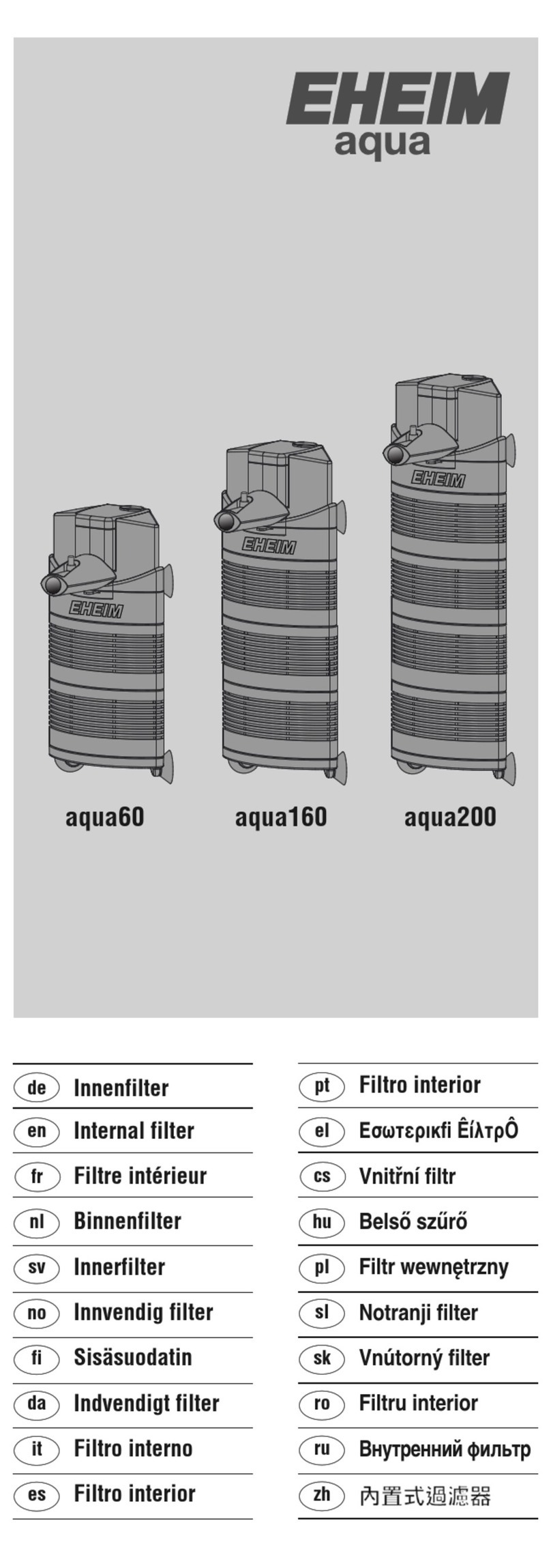
EHEIM
EHEIM aqua160 Original operating manual
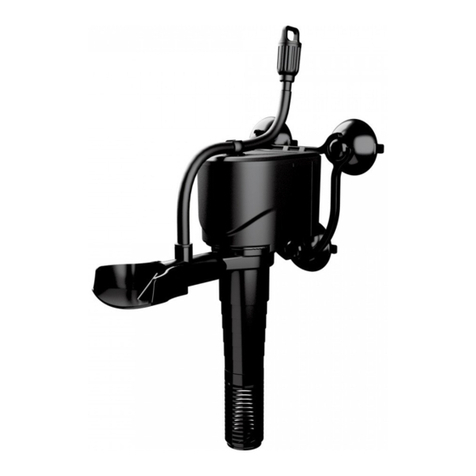
Tetra
Tetra FilterJet 400 instruction manual
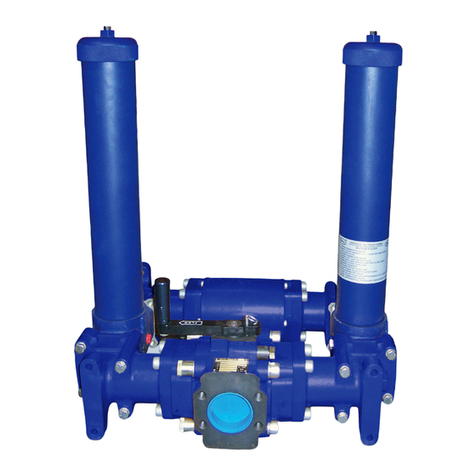
Pall
Pall UR329 Series Service instructions

HydroLogic
HydroLogic Merlin Garden pro user manual
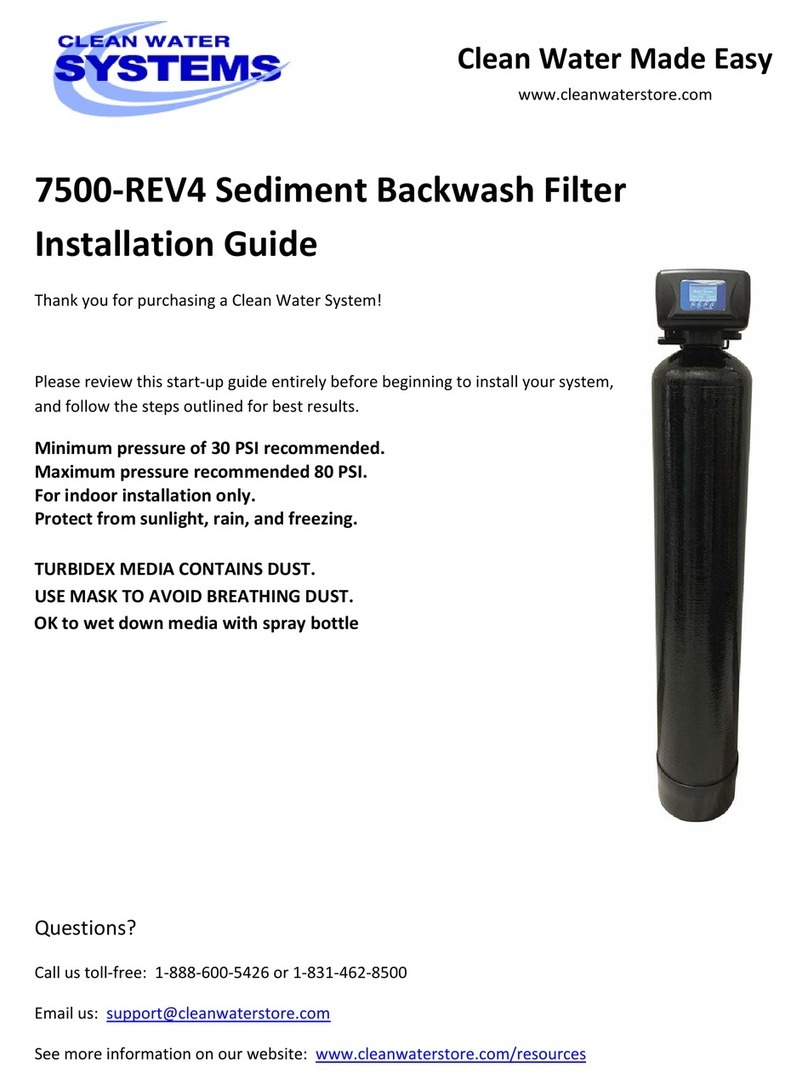
Clean Water Systems
Clean Water Systems 7500-REV4 installation guide
